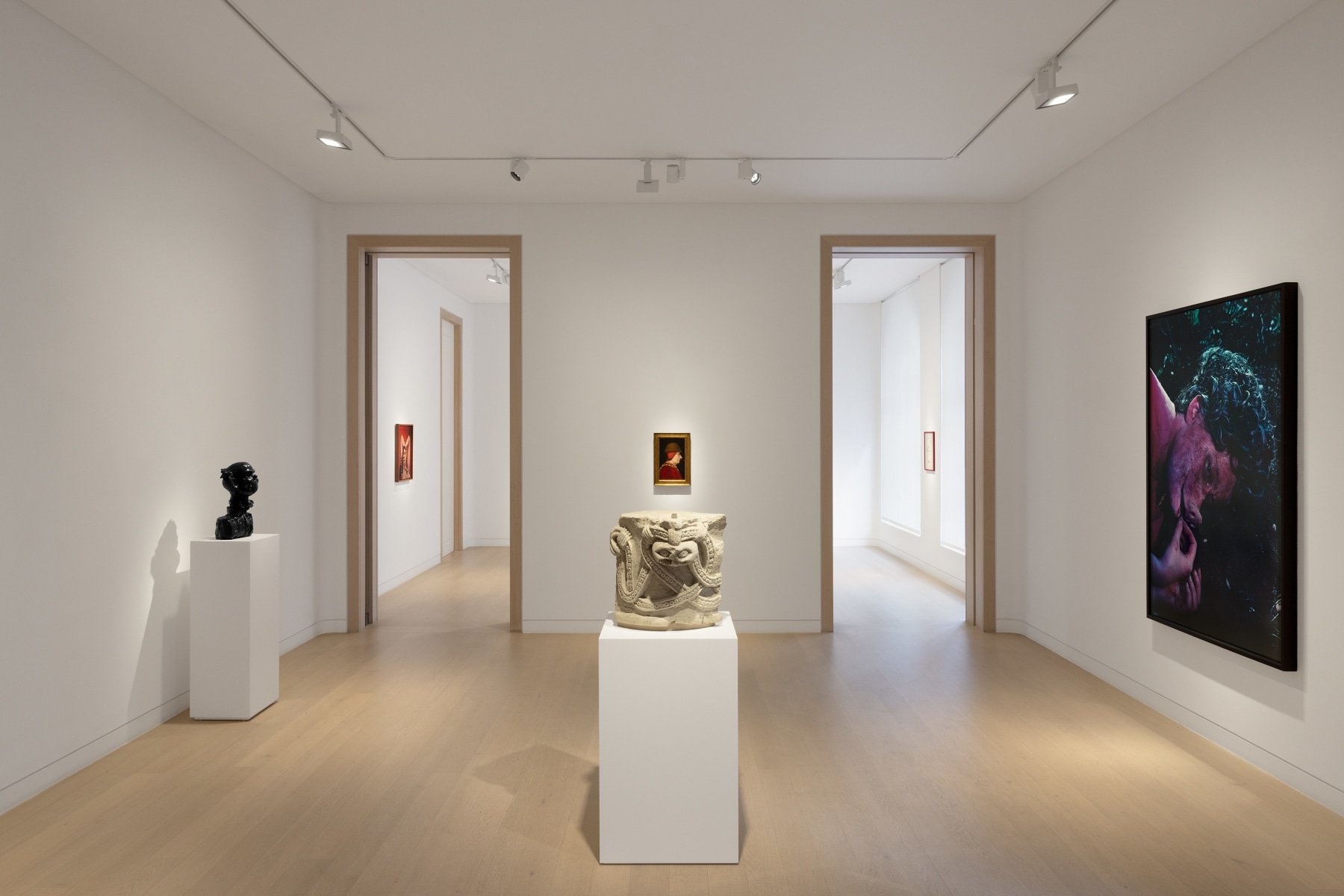ON UGLINESS: MEDIEVAL AND CONTEMPORARY
Skarstedt London is delighted to announce On Ugliness: Medieval and Contemporary, a rare convergence of paintings, sculptures and photographs spanning the twelfth century to the present day.
February 27 – April 26, 2025
Taking its title from Umberto Eco’s seminal publication On Ugliness, this curated presentation examines the grotesque as a universal theme, tracing its evolution across a millennium of artistic output. Four medieval stone heads form the crux of this exhibition, their contorted faces- ranging from grimaces to sneers- serve as a touchstone throughout art history and play a formative role in contemporary interpretations of the grotesque. The exhibition features work by George Condo, Nicole Eisenman, Jameson Green, Martin Kippenberger, Barbara Kruger, Jacob de Litemont, Pablo Picasso, Stefan Rinck, Pensionante del Saraceni, Cindy Sherman, Thomas Schütte and a selection of unknown artists working between the twelfth and fourteenth centuries.
Although the grotesque has been dismissed and deplored by various critics over the past millennium, it remains a recurrent fascination, continuously re-imagined by each generation. As a result, its etymology is in constant flux. Some argue that the grotesque is a collective tool for conceptualising difference and change, while others see it as a means of liberation, freeing the artist from earthly constraints. Regardless of the motif or iconography, the grotesque reveals aspects of the world that elude comprehension, therefore our experience of the genre should result in bafflement.
The most prevalent expression of the grotesque is through metamorphosis or hybridity – a motif discovered in the Roman Emperor Nero’s Villa Aurea upon its excavation in the fifteenth century. The ornamental scenes, later dubbed grottesche (‘from a cave’) captivated artists from Raphael to Pablo Picasso, who revelled in hybridity - first understood through his early proto-cubist works. During this period, he experimented with fragmentation and metamorphosis as exemplified in Tête de femme (1908), an exquisite drawing inspired by African and Iberian artefacts. Similarly, Nicole Eisenman explores corporeal distortion in Maquette: Sketch for a Fountain (Reclining Figure) (2019), where the figure’s exaggerated limbs merge into an amorphous whole. Whilst not traditionally beautiful, Eisenman imbues a serene reverie into the figure, originally conceived for a body of water.
Each work on view simultaneously delights and disgusts, confronting the viewer with distorted faces, surreal imagery, and hybrid forms, oscillating between the hellish and the carnivalesque. On Ugliness highlights the power of the grotesque to defy artistic conventions through exaggeration, fragmentation, and metamorphosis—an enduring genre that has captivated civilisations throughout history.


